Let’s say you’re walking down the aisle of an antique store, mildly browsing the booths, hunting for treasure. All of a sudden, there! You see it. A cast iron skillet. Sure, there are rust spots, and it looks like it hasn’t seen service for a few decades, but you’re smart enough to know this thing is a diamond in the rough.
Far from mere wall-hanging kitsch, you hold in your hands the key to perfectly browned biscuits, succulent seared steaks, and delectable fried eggs. It just needs a little TLC.
If you have come into some cast iron that hasn’t been used in a while but you’re not sure what to do to get it running again, take heart. Restoring cast iron sounds intimidating but is actually an easy endeavor. All it takes is a bit of knowledge about cast iron’s simple needs and how to maintain them, and you’ll be equipped with the most faithful, useful kitchen implement you’ve ever known.
How To Find The Right Piece Worth Restoring
The first step to restoring cast iron is knowing if the piece can be restored in the first place. It would be disappointing to go through all the work to clean the pan only to find out it was too far gone.
Check For Cracks
The first thing to look for is a crack. Some pans may have an obvious crack which is something that really can’t be fixed. Others may have a crack hidden beneath a weathered patina. Serious Eats offers this easy tip: Knock on the bottom of the pan with your knuckles. If there’s a nice ringing sound, the piece is solid. If it makes a dull thunk, it looks like you have a new wall hanging, but not much else.
Check For Pitting
A second thing to look for when you’re planning on restoring cast iron is pitting. Seriously rusted pans may have crater-like divots covering the surface. They’re more than just surface damage. They extend into the material of the pan itself. If they’re on the sides or bottom, you may be able to get away with some pitting, but if it covers the cooking surface, it will seriously hamper your ability to develop a good nonstick surface.
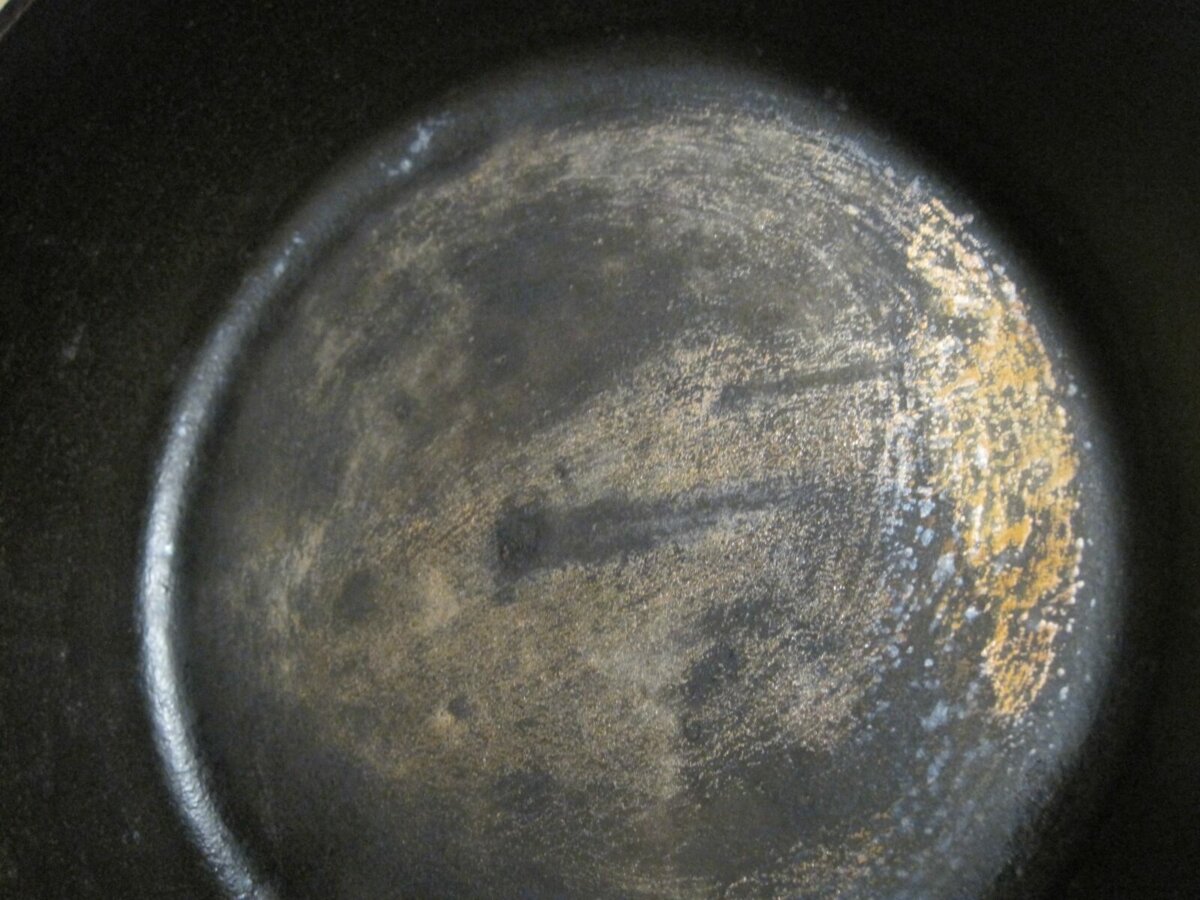
Something to not stress as much over is surface rust — though it may certainly look intimidating. Rust can happen overnight on a pan, so it’s far less a problem than it seems.
What’s The Deal With Seasoning?
You can’t work with cast iron without understanding about seasoning. This is the term used to describe the baked-on patina of oil that makes a cast iron pan a nonstick surface. Seasoning is what Teflon is mimicking.
It requires a tiny bit of work to build up, but once you have it done, seasoning does the job without adding potentially toxic substances to your food … which is more than I can say about nonstick-coated cookware.
In addition, seasoning can be renewed. If you accidentally overheat your cast iron, or scratch it with a metal spatula; or if you forget about your pan for a few months and it gets rusty, it’s not ruined. It only needs a quick re-seasoning and it will be as good as new.
Steps For Restoring Cast Iron
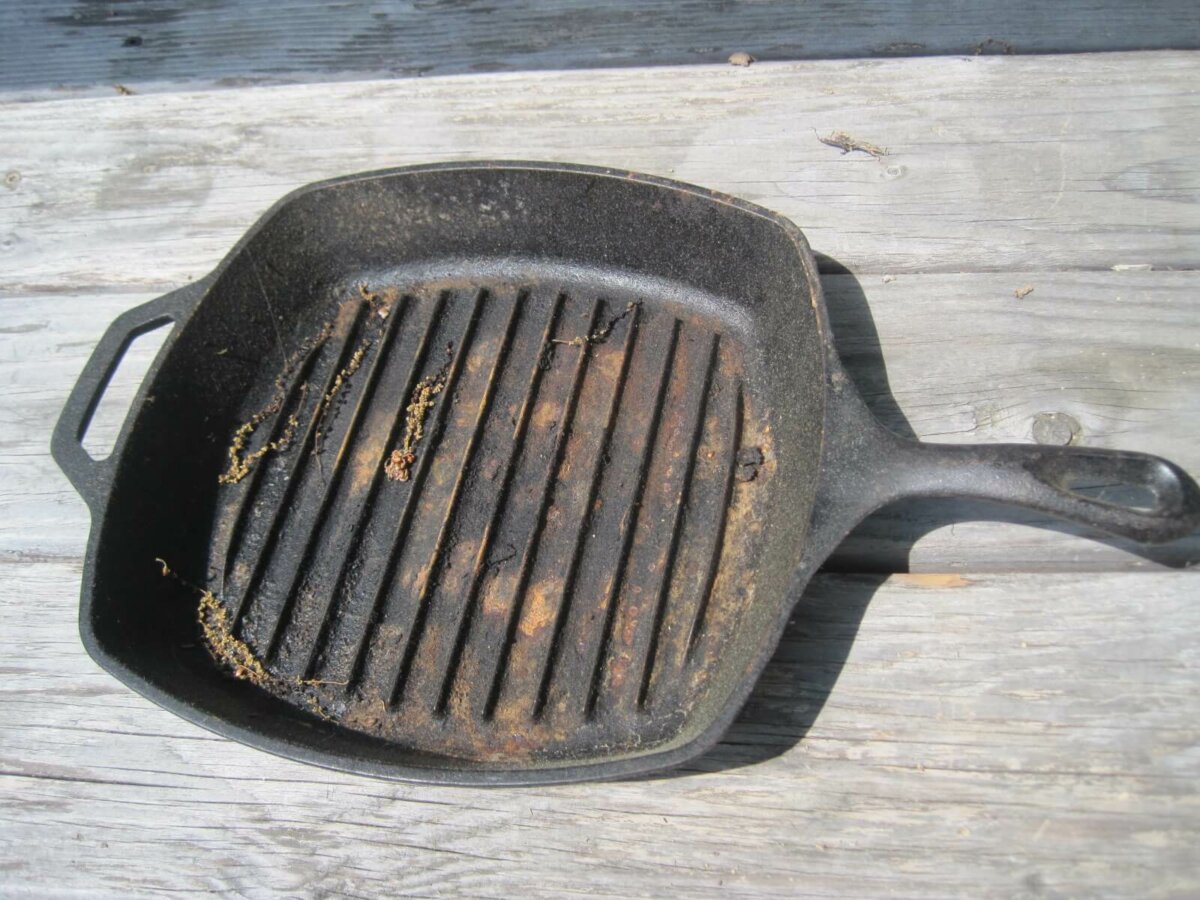
1. Burn Off Any Old Residual Food
My first step to restoring cast iron is to burn off any residual gunk from the previous owner. This is optional, but I like the fresh start it offers. For example, this grill pan had some residual mystery cooking fat congealed in the ridges, and that didn’t seem like a tasty dinner flavoring to me.
I recommend doing this step outside over a fire. If you burn off surface garbage on the stovetop, you’re going to have a kitchen full of smoke faster than you can say “This was a bad idea.”
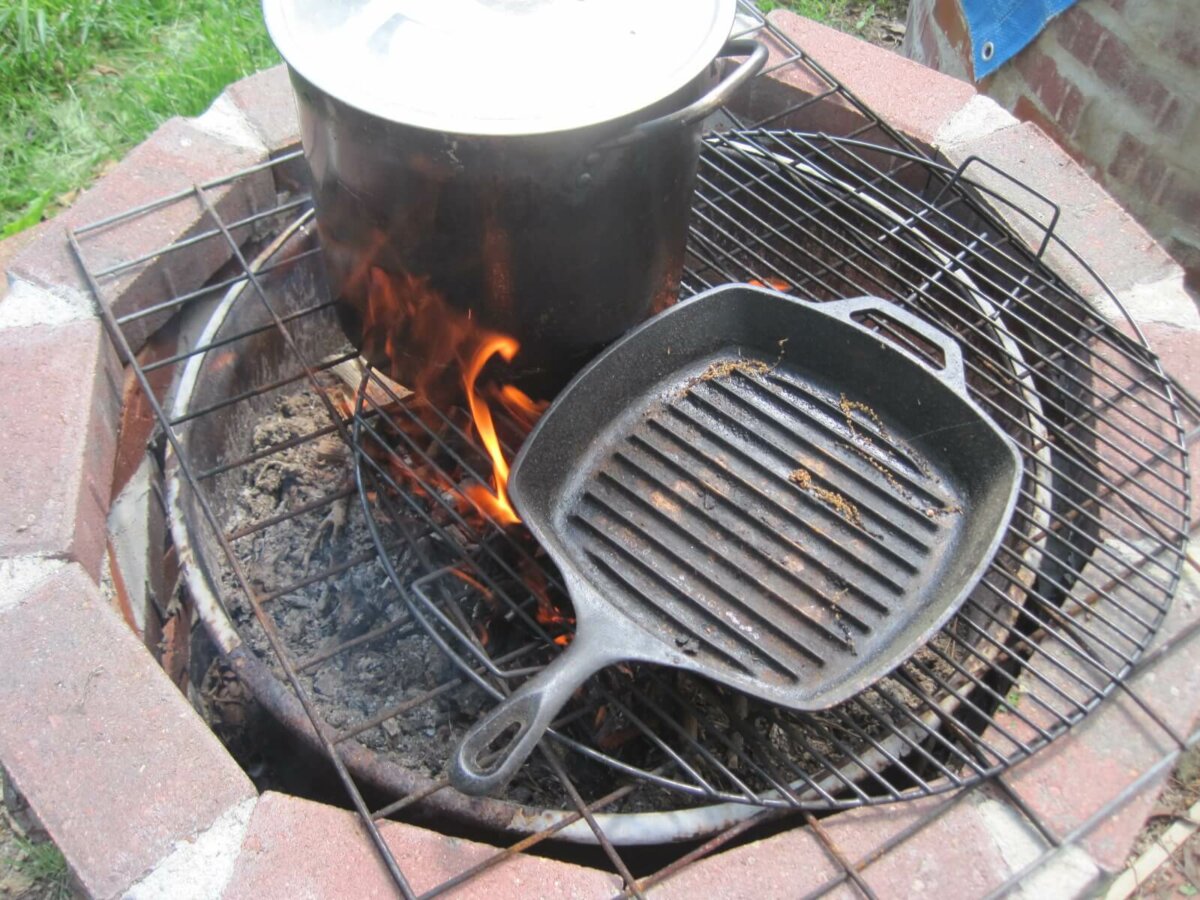
Don’t dismissively leave a pan over a fire for hours because that can cause significant damage. I recommend just heating the pan until it smokes, then taking it off the heat and allowing it to cool. Any old junk should now be reduced to black flakiness.
2. Scrub The Cast Iron
Once the old surface has been burned off, the next step to restoring cast iron requires you to get the sink full of warm, soapy water. It’s time to scrub. With some steel wool, scrub the pan until all rust, black flakes of burned crud, and any other material on the surface have been removed.
Parts of the pan will probably take on a dull grey color. It is the original color of the cast iron sans the protective seasoning. Without a protective layer of oil, this exposed surface will almost immediately rust once dry, so it’s important to the next step soon.
Getting a neglected pan truly clean again may take a little bit of time. If you resent having to do this deep clean, keep in mind that if you care for your cast iron, it is the only time you’ll have to do it. There are alternative methods to scrubbing such as a judicious soak in vinegar, but I have found this low-tech method is best for me.
3. Set The Cast Iron On Low Heat To Dry It Out
Once you get all the rust, gunk, flakes, and whatever else off the pan, set it on a low flame to completely dry it.
4. Add Oil To The Pan
Now take a cooking oil that doesn’t have a low smoke point — sunflower, safflower, or organic canola work great — and pour 2 teaspoons or so in the center of the pan. Using a paper towel, completely coat the cooking surface of the pan with an even layer of oil.
5. Heat It Up And Cool It Down
Turn up the heat until the oil begins to smoke, take the pan off the heat, and allow it to cool.
Please monitor your pans during this process. Leaving an oily, unattended pan over heat can quickly turn into a fire hazard.
6. Let It Cool And Get Cooking!
Now the pan is set for beginning service. The first few times you cook with it, be patient. The seasoning takes time to truly build up, so you may have some sticky fried eggs or disappointing results with grilled cheese.
Don’t get frustrated. Just keep re-seasoning after every use, and I guarantee the glorious days of cast iron-seared perfection are on your horizon. The more you use your pans, the better they will become.
Alternative Method For Restoring Cast Iron
If you found that you needed to scrub seasoning off the entire pan, top and bottom, another method for re-seasoning is to coat the pan in oil, and then put it in the oven for an hour at 375 degrees Fahrenheit. Place a baking sheet on the rack below it to catch any drips. Then let it cool in the oven.
Restoration Methods I Don’t Recommend
Of course, you’re bound to come across all sorts of methods for restoring cast iron online. Here are some methods that I personally don’t recommend for a few reasons.
Sandblasting
Some methods for restoring cast iron involve sandblasting the heck out of the surface to shortcut the scrubbing step. This may remove rust, but it can also remove bits of the metal itself, permanently altering the form and surface of the pan.
Not Washing It
Some cast iron adherents claim the best way to care for a pan is to never wash it (never let soap even come near it) and keep reheating and cooking in the pan. This can result in a lot of built-up, burned-on mystery gunk that eventually, makes the surface of the pan uneven (not to mention making your pancakes taste slightly of onions, or whatever you had cooked earlier).
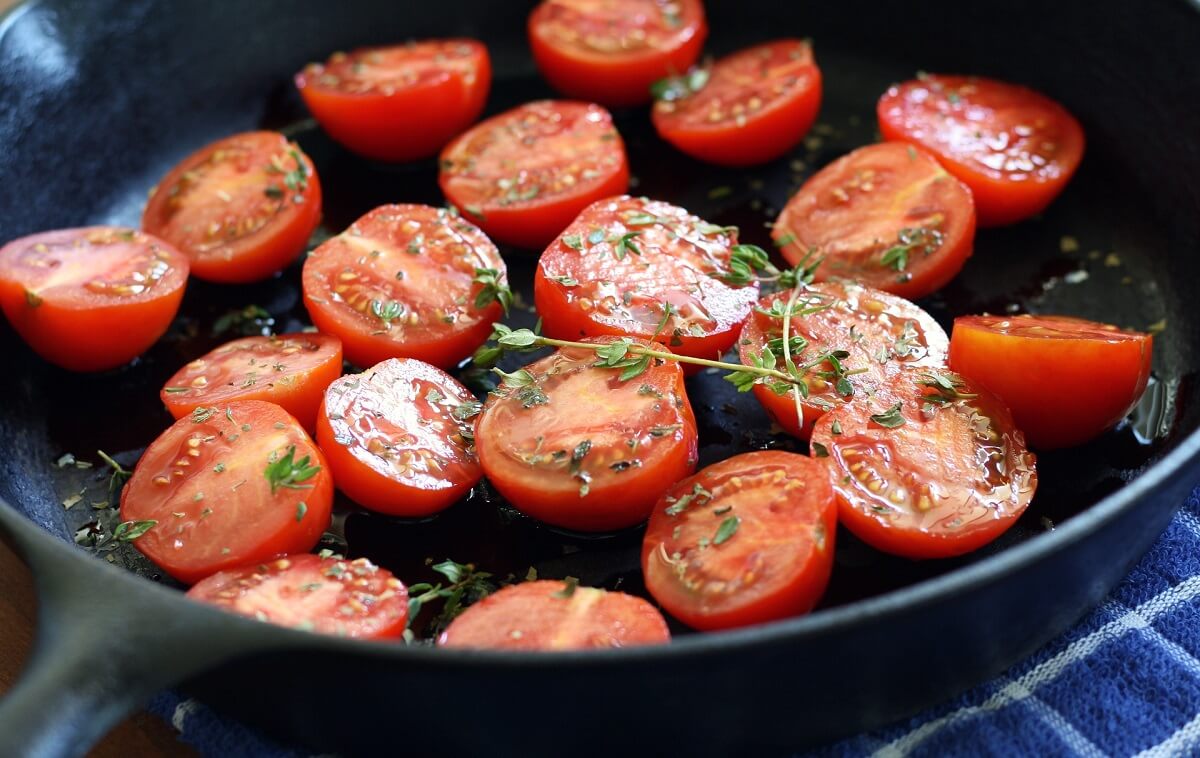
As someone who uses cast iron every day, I can attest that I wash my cast iron, and it still works great. If I have fried something neutral-tasting (like the aforementioned pancakes) I may only wipe out the pan after use. But if I have cooked stronger-flavored food or if there is residue on the pan, I promise there is nothing wrong with cleaning it. Please clean it!
I’ve even committed the cardinal sin of scrubbing a crusty pan with a light touch of steel wool to remove stubborn food. The seasoning is important, but it is not sacred. As you read in this article, it’s easy enough to re-season a pan if you accidentally went too far with the cleaning.
Unattended Soak In Vinegar
As I mentioned, I’ve seen methods of restoring cast iron that involve removing the rust with vinegar. This involves using the acidic nature of vinegar to dissolve rust from the surface of the pan. It totally works, but you have to be careful not to leave the pan in the acidic bath for too long.
Related Post: Cooking With Cast Iron
If you don’t attend the cast iron and remove it once the rust has come off, the acid can start eating away the metal itself, causing irreversible pitting. It’s why you’ll often have to re-season cast iron after cooking acidic, tomato-based dishes.
How To Clean Cast Iron After Cooking
Once you’ve done the work to get your cast iron clean and seasoned, maintaining it is a breeze … IF you cook with it often.
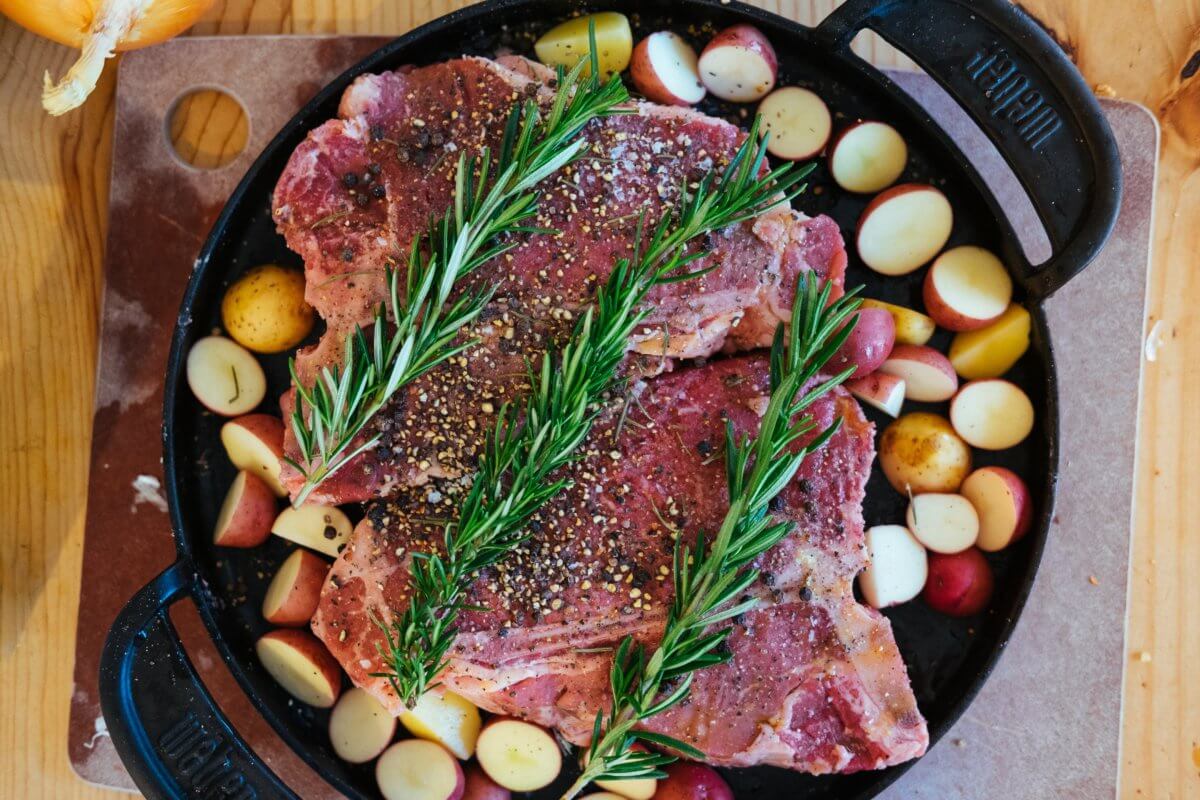
Daily use of a cast iron pan can result in a lustrous, glossy patina that defies food from sticking. Maintaining that perfect cooking surface is a simple process of cooking often, then rinsing, drying, and oiling.
1. Let The Pan Cool And Wash It
After the meal, wash your cast iron when it has cooled. The nice thing about well-seasoned cast iron is you barely need to wash it after cooking. Most stuff slips off in water without scrubbing. If anything does stick, you can usually remove it with a normal sponge or washcloth.
One thing you DON’T want to do is to soak your cast iron in soapy water for a long time. This will soften and destroy the wonderful nonstick surface you’ve worked so hard to build. Here’s the paradigm shift to keep in mind with this cookware: If it feels a little oily after being rinsed, it’s no big deal and actually a good thing. Any residual oily feeling will just become the next layer of the seasoning in the end.
2. Return It To The Stovetop
After removing all food, put the cast iron back on the stovetop and set it to medium heat until the water has evaporated from the surface. This is a really important step, and one that you should never skip past. Any water left on the cast iron, whether pooled in the side of the pan or on a damp towel where the pan was put to dry after washing, will rust after a few hours.
3. Apply Cooking Oil And Coat The Surface
Finally, dab a few drops of any cooking oil into the pan and use a cloth or paper towel to evenly coat the surface.
4. Heat The Pan Till It Smokes
Leave the heat on until it starts to smoke, and then remove the pan from the heat and allow it to cool. Your cast iron is now clean, oiled, and ready for the next meal.
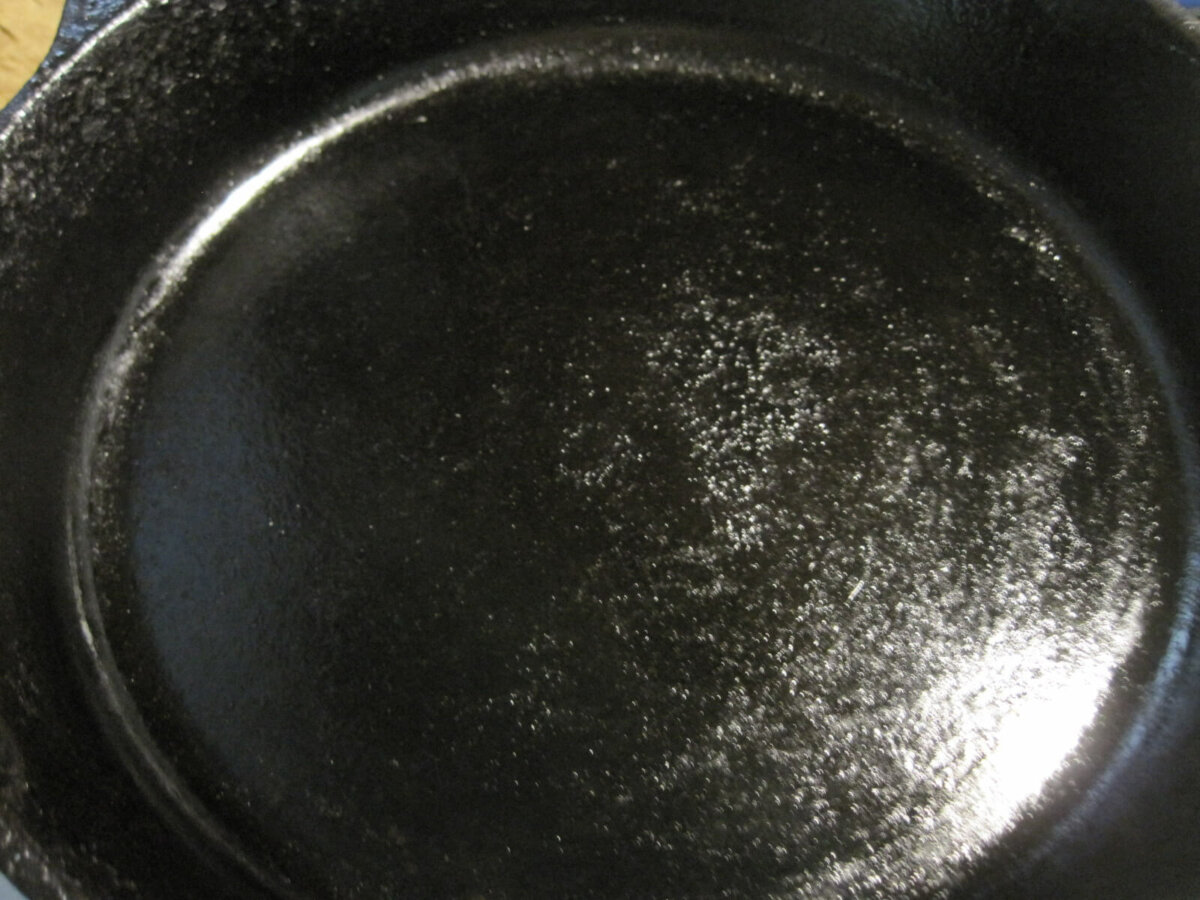
I believe a cast iron skillet (and its many siblings of various sizes and shapes) are an unofficial requirement for the homesteader’s kitchen. Give this kitchen workhorse the treatment it deserves and someday, you may be able to pass on a perfectly-seasoned heirloom to your grandchildren. Did you try this method of restoring cast iron? How did it work for you? Let us know in the comments below!










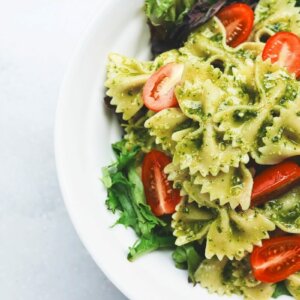
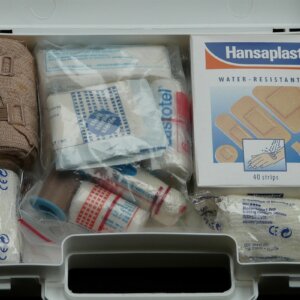

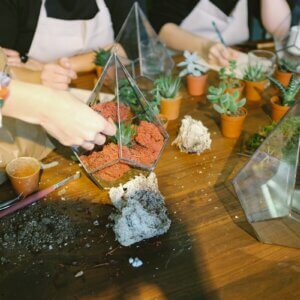


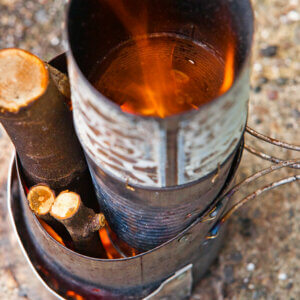







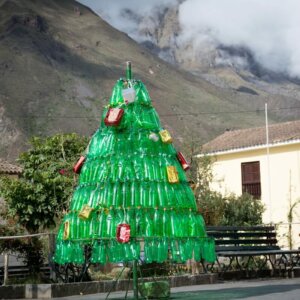












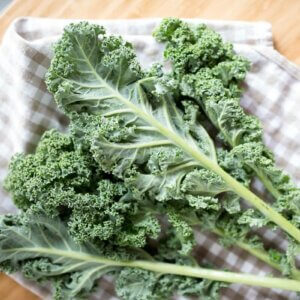



i need help my husband got to different types of meat presses and after washing he put them to the side to be clean i was sick so was unable to wash for a few day when found they had been sitting in water and had started to rust i know how to clean pans but not the presses do you have and thoughts